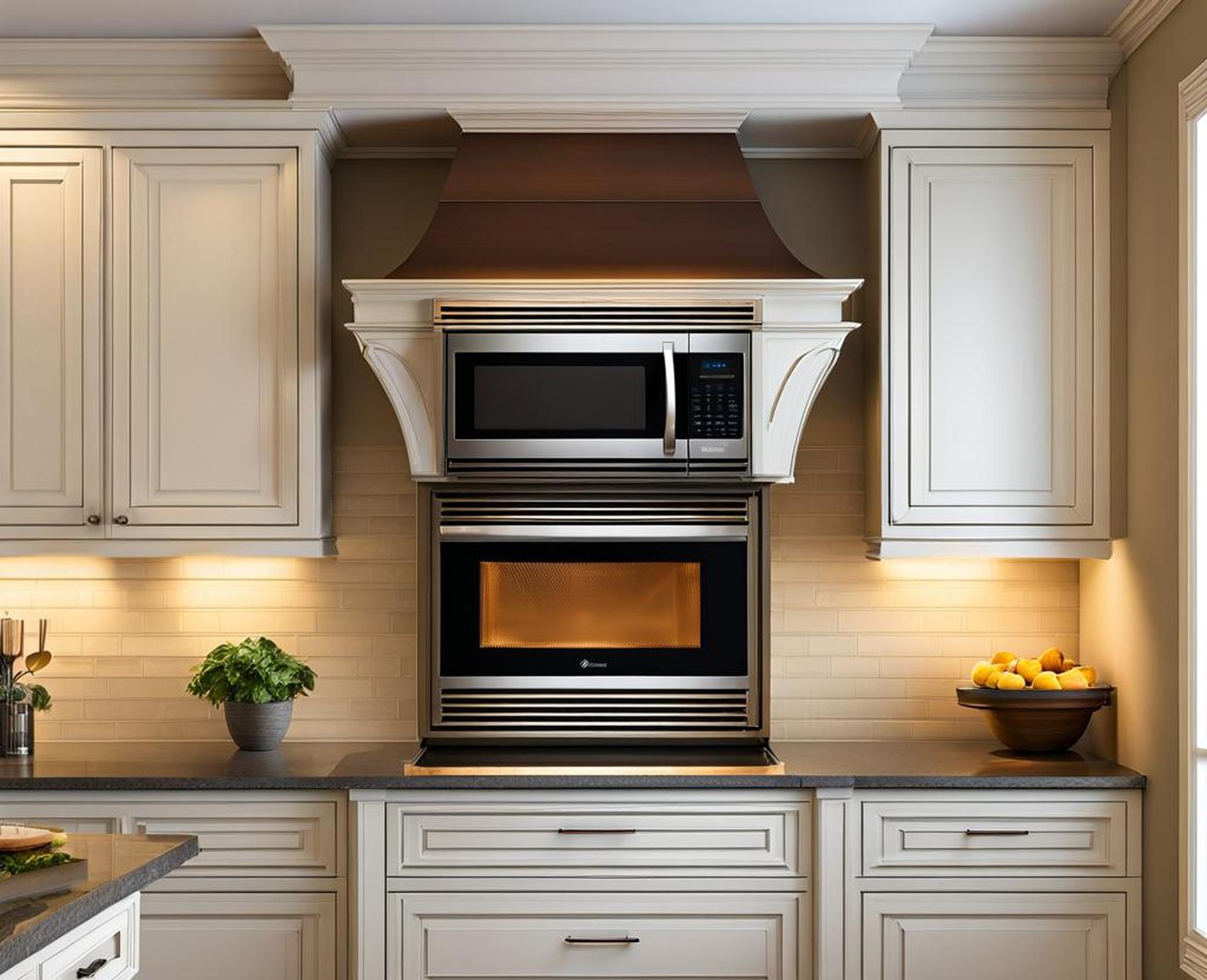If your kitchen is feeling cramped, swapping out an oversized range hood for a sleek microwave is a genius hack to free up precious counter space. Not only will you gain room for meal prep and appliances, you’ll also enjoy the convenience of having a microwave nearby. Here’s everything you need to know about this kitchen upgrade.
Replacing a bulky, outdated range hood with a streamlined microwave above your stove opens up your kitchen in more ways than one. You’ll love having a multi-functional appliance able to vent, cook, defrost, and reheat. Microwaves are also more energy-efficient and cost-effective than many traditional vent hoods. Follow this guide to learn when and why upgrading makes sense, weigh the pros and cons, and execute the swap seamlessly.
When to Consider Replacing Your Current Range Hood
Several scenarios may make replacing your range hood with a microwave a smart decision:
- You’re doing a kitchen remodel or renovation
- Your current hood is outdated, noisy, or nonfunctional
- You need more prep and appliance space
- You want added convenience of a microwave near the stove
As part of a larger kitchen overhaul, installing a microwave instead of a hood can lend a fresh, modern look while optimizing your layout. Or if your current model is an eyesore or no longer works properly, an upgrade is likely overdue.
The Advantages of Microwaves over Traditional Range Hoods
Here are some of the biggest benefits of microwaves over standard vent hoods:

- Increased counter space – Microwaves have a smaller footprint
- Multifunctionality – Microwaves can vent, cook, defrost and reheat
- Energy efficiency – Microwaves use less energy than hoods
- Streamlined look – Microwaves have a sleek, minimalist style
- Cost savings – Microwaves tend to be more budget-friendly
With their combination of ventilation and cooking in one appliance, microwaves are an ultra-convenient choice for over the stove. You’ll gain back precious real estate for food prep and appliances. Going with a compact microwave aligns with many homeowners’ preferences for modern, minimalist kitchen aesthetics as well.
Potential Drawbacks to Consider
Replacing a range hood with a microwave also comes with a few disadvantages or considerations:
- May not ventilate as powerfully as some range hoods
- Electrical modifications may be needed
- Microwave size vs. cabinet dimensions
- Noisier operation compared to some hoods
- Proximity of controls to the stove
The biggest potential pitfall is reduced ventilation power, as commercial-grade range hoods often move more cubic feet per minute (CFM) than typical microwaves. You’ll also want to make sure the microwave dimensions work within your current setup. Factor in any electrical or ductwork adjustments as well during planning.
Choosing the Right Microwave
Selecting an over-the-range microwave designed specifically to replace a vent hood is key. Here’s what to look for:
- 300+ CFM airflow rating
- Recirculating or externally vented options
- Adjustable fan speeds and ventilation levels
- Matching dimensions and mounting brackets
- Reasonable noise rating (below 70 dB)
Measure your existing cabinet space carefully, inspect the current venting setup, and read microwave specs thoroughly. Focus on models rated for at least 300 CFM to ensure decent ventilation power. Most recirculating options work well, but you can also find compatible externally vented microwaves.
Installation Tips for Seamless Replacement
Properly installing your new microwave ensures it operates safely and effectively in place of your old range hood. Follow these tips:
- Hire a professional installer for best results
- Read instructions thoroughly before beginning
- Have an assistant to help with lifting and positioning
- Disconnect hood venting/electrical before removing
- Reinforce cabinet structure to support microwave weight
- Allow ample time for adjustments to venting/ducts
Take time to correctly measure, mount, and connect the new microwave based on the manufacturer’s directions. Adjusting the venting may take some tweaking to get right. If needed, have a pro handle the electrical, carpentry, and ventilation modifications for optimal performance and safety.
Weighing the Pros and Cons
Replacing your outdated, bulky range hood with a sleek microwave can be a game-changer for small, cramped kitchens. You’ll regain precious counter space for food prep and appliances. Microwaves multitask by providing ventilation, quick cooking, and reheating in one convenient spot.
However, microwaves may not always ventilate as capably as commercial-grade range hoods. Consider your current venting needs and compare CFM ratings. With some electrical or ductwork modifications, most microwaves can effectively recirculate air and remove smoke, grease, and odors.
Swapping a less-efficient range hood for a microwave above your stove can optimize space and enhance convenience. Carefully weigh the pros and cons for your specific kitchen. Measure carefully and select a properly sized microwave with enough power to replace your existing ventilation. With strategic planning and professional installation, you can successfully upgrade to a microwave that saves space while still effectively removing cooking fumes and odors.
